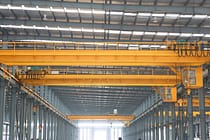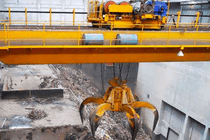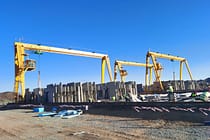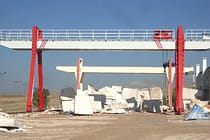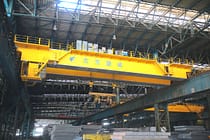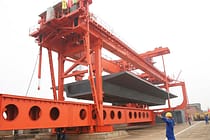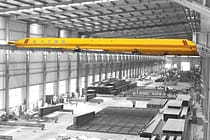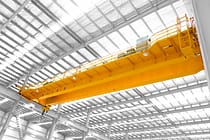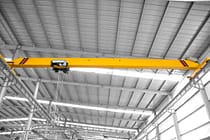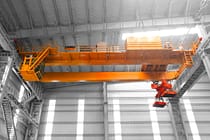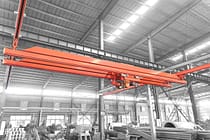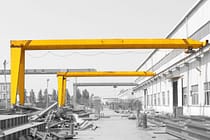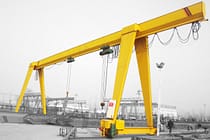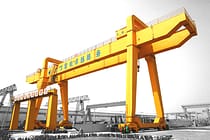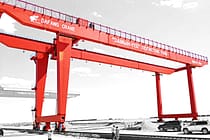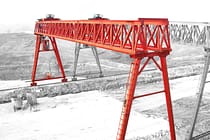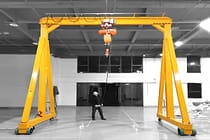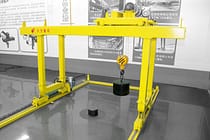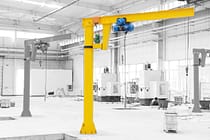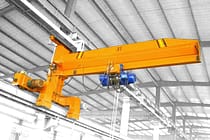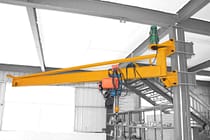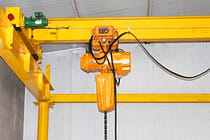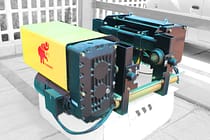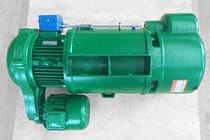How To Calculate Overhead Crane Load Capacity
Overhead cranes are essential pieces of equipment used in many industries for lifting heavy loads. It is important to ensure that the crane is capable of handling the load weight to prevent accidents and damage to the equipment. In this article, we will explore how to calculate overhead crane load capacity.
What Is Overhead Crane Load Capacity?
Overhead crane load capacity refers to the maximum weight that an overhead crane can safely lift and transport. It’s determined by several factors, including the span of the crane, height under the hook, and duty cycle. The load capacity of an overhead crane will typically be specified by the manufacturer and can range from a few hundred pounds to several tons.
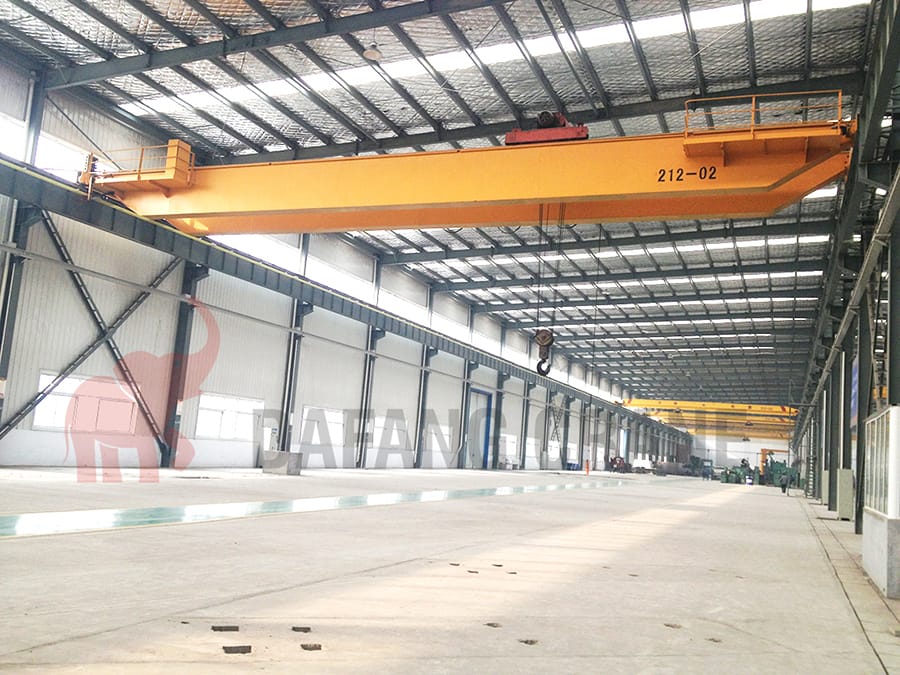
Importance Of Knowing Overhead Crane Load Capacity
Knowing the overhead crane load capacity is crucial to prevent accidents and injuries. Overloading a crane beyond its load capacity can cause the crane to tip over or collapse, endangering nearby workers and damaging the equipment. Additionally, exceeding the load capacity can result in material damage, production delays, and potential legal liabilities.
Moreover, knowing the EOT crane’s load capacity can help determine the appropriate crane to use for a particular job. Choosing the wrong bridge crane can lead to inefficiency, unnecessary expenses, and safety hazards. For instance, using a crane with low load capacity for a heavy load can cause the crane to malfunction, leading to downtime and loss of revenue.
Calculation Of Overhead Crane Load Capacity
To calculate overhead crane load capacity, you need to know four critical values:
Crane Span: The crane span refers to the distance between the centres of the two end trucks supporting the bridge. It is measured from rail to rail.
Bridge Weight (Including Trolley and Hoist): The bridge weight includes the weight of the beam, trolley, and hoist. You can find this information in the crane manufacturer’s manual or by weighing the components.
Maximum Wheel Load: The maximum wheel load is the maximum amount of weight each wheel can support. This value is also available in the crane manufacturer’s manual.
Deflection: Deflection refers to the amount of bending that occurs in the crane’s structure when it is loaded. It is usually limited to 1/600th of the span.
Once you have these values, you can use the following formula to calculate the overhead crane load capacity:
Load Capacity = (Maximum Wheel Load x Number of Wheels) + Bridge Weight / (Span / 800) – Deflection
Example Calculation
Suppose your EOT crane has the following specifications:
Crane Span: 25 feet
Bridge Weight (Including Trolley and Hoist): 12,000 lbs
Maximum Wheel Load: 10,000 lbs
Deflection: 0.04 inches
Using the formula above, we can calculate its load capacity as follows:
Load Capacity = (10,000 lbs x 8 wheels) + 12,000 lbs / (25 ft / 800) – 0.04 in
Load Capacity = 80,000 lbs + 12,000 lbs / (0.03125 ft) – 0.04 in
Load Capacity = 2,560,000 lbs – 12,000 lbs / 0.03125 ft
Load Capacity = 2,560,000 lbs – 384,000 lbs
Load Capacity = 2,176,000 lbs
Therefore, this overhead crane has a load capacity of 2,176,000 pounds.
Factors That Affect Overhead Crane Load Capacity
Span Of The Crane
One of the most important factors affecting the load capacity of a bridge crane is its span. The span refers to the distance between the rails on which the crane travels. Longer spans generally mean that the crane can support heavier loads, while shorter spans have lower capacity limits. Ultimately, the maximum load capacity of an overhead crane is determined by the weakest component of the system.
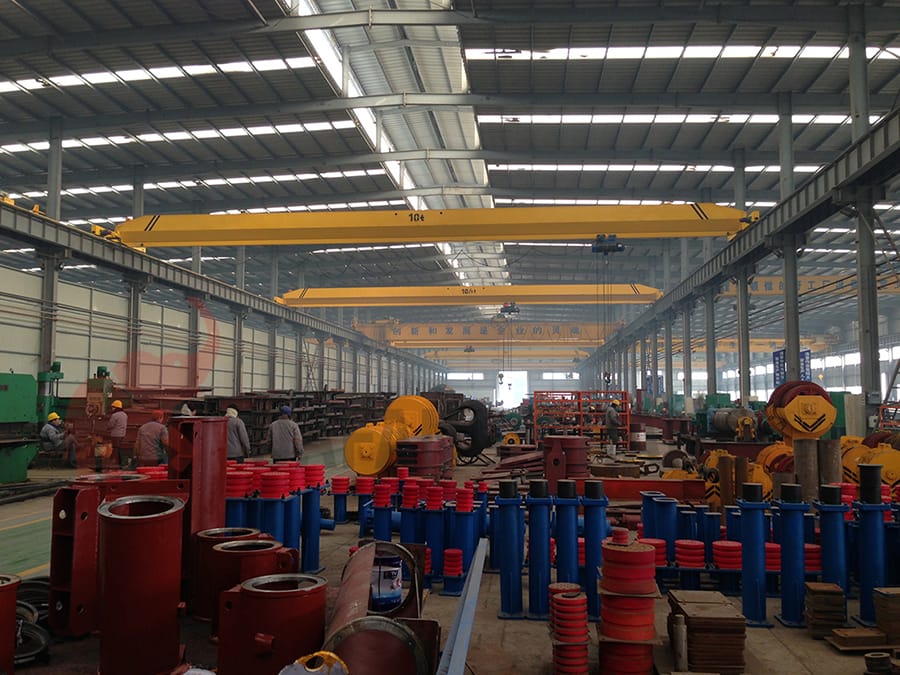
Height Under The Hook
Another important factor that affects an overhead crane’s load capacity is the height under the hook. This refers to the distance between the bottom of the crane’s hoist and the floor below. As this distance increases, the load capacity of the crane decreases, since the crane must use more energy to lift the load higher. Therefore, it is important to consider the height under the hook when selecting an EOT crane for a particular application.
Duty Cycle
The duty cycle of a bridge crane refers to the amount of time it spends lifting loads compared to the amount of time it is idle. Cranes with higher-duty cycles are designed to handle continuous lifting and moving, while those with lower-duty cycles are intended for intermittent use. Choosing a crane with an appropriate duty cycle is essential for ensuring that it can handle the demands of the job at hand without experiencing premature wear or failure.
The Crane’s Design And Construction
The size and shape of the crane, along with its mechanical components, determine its load capacity. The manufacturer specifies the maximum weight limit that the crane can carry safely. Therefore, it is critical to ensure that the crane’s design and construction meet industry standards and regulations to avoid overloading or causing accidents during operations.
Environment
The environment in which the overhead crane will be used can also affect its load capacity. Factors such as temperature, humidity, and corrosive or abrasive materials can all impact the performance of the crane and reduce its load capacity over time. Choosing a crane that is designed for the specific environment in which it will be used can help ensure that it maintains its load capacity and operates safely and efficiently over the long term.
FAQs
- What happens if the crane is overloaded?
Overloading the crane can lead to structural damage, equipment failure, and even accidents or injuries. Therefore, it is essential to ensure that the crane is not overloaded and operated within its load capacity. - What are some tips for overhead crane load capacity safety?
Use the right crane for the job, regularly inspect the crane and its components, avoid overloading, train operators on safe practices, and follow all safety guidelines and regulations. - What is the maximum weight an overhead crane can lift?
The maximum weight an overhead crane can lift depends on its type, design, and environmental conditions. Bridge cranes have a load capacity ranging from 1 ton to over 100 tons. - How do you determine the lifting height of a load?
To determine the lifting height of a load, measure the distance between the ground and where the load needs to be lifted. - How do I know if my crane is suitable for my application?
Consult with a qualified engineer or crane specialist to determine the appropriate crane for your application based on factors such as load capacity, span, lift height, and duty class.
Send Your Inquiry
- Email: sales@hndfcrane.com
- WhatsApp: +86-191 3738 6654
- Tel: +86-373-581 8299
- Fax: +86-373-215 7000
- Add: Changnao Industrial District, Xinxiang City, Henan Province, China
